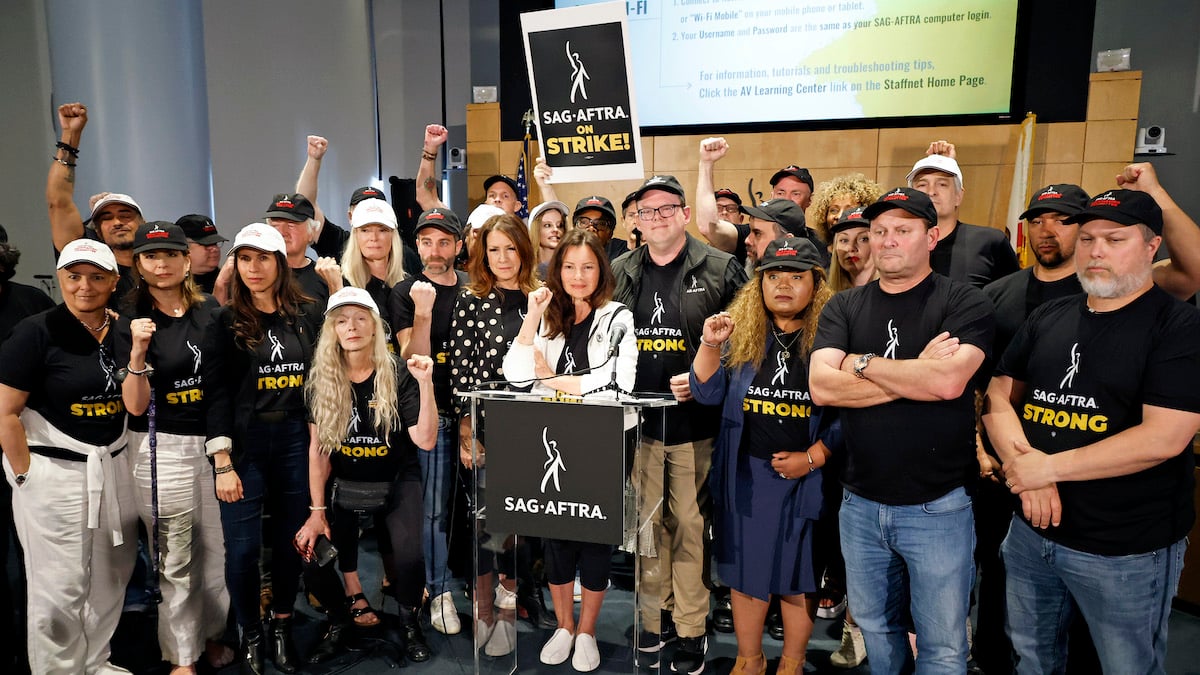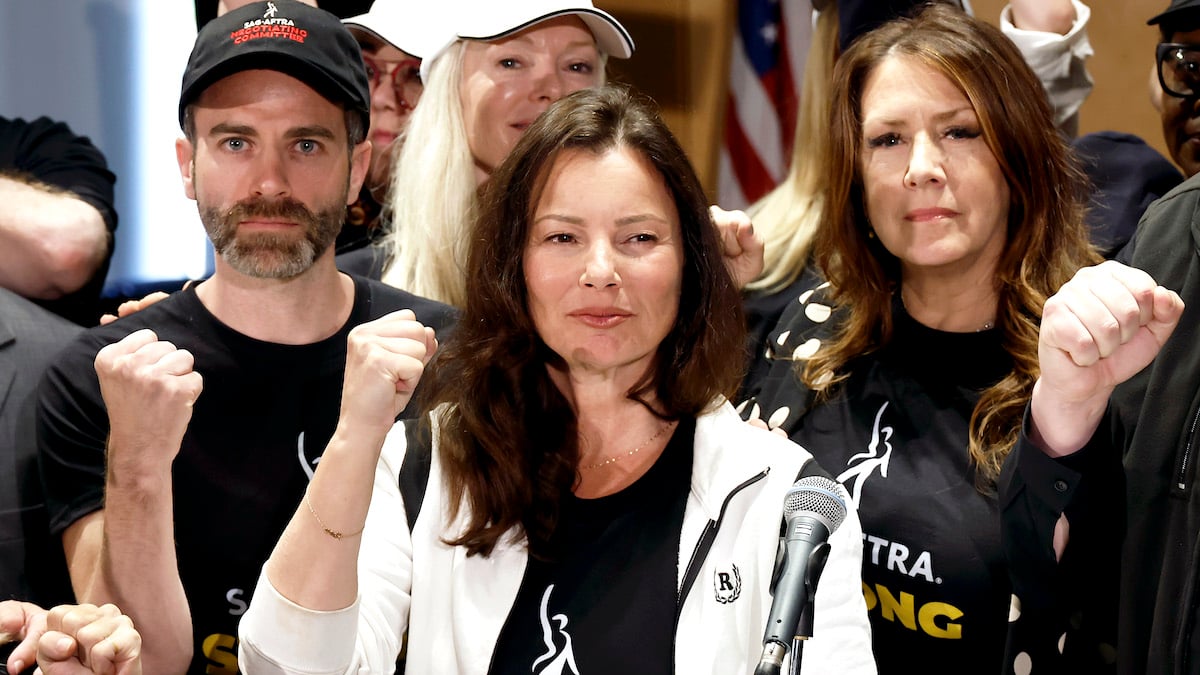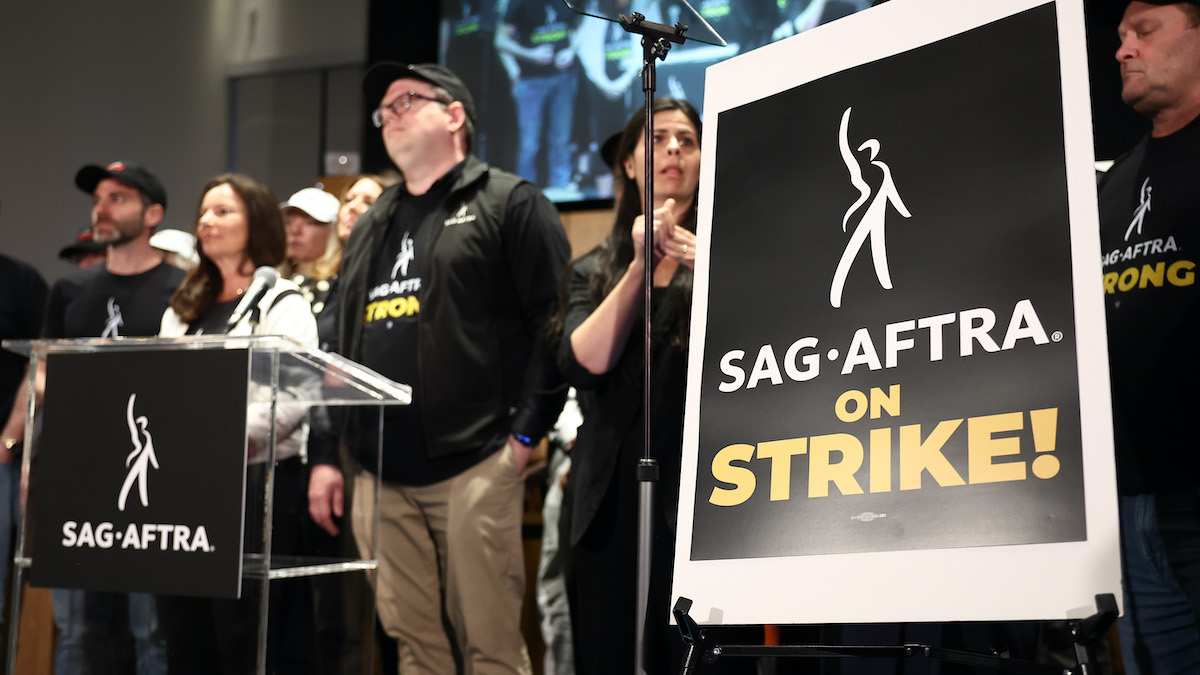On July 13, 2023, the Screen Actors Guild-American Federation of Television and Radio Artists (SAG-AFTRA) announced it was going on strike. And just like that, Tinseltown came to a standstill.
Since the Writers Guild of America went on strike two months earlier in May, production for countless movie and TV shows — even including press tours for the films that have already been made — came to a screeching halt.
It’s been over 60 years since both the Screen Actors Guild and the Writers Guild of America simultaneously launched into a strike. However, it is not the last time actors have gone on strike in general. As a matter of fact, it has happened three times since then (including this one).
When was the last time SAG-AFTRA went on strike and how long did it last?

The last time actors threatened to go on strike, Ronald Reagan was President of the United States. This was in 1986 before the Screen Actors Guild merged with the American Federation of Television and Radio Artists. At the time, representatives for actors and producers launched into a 14-hour negotiation, eventually coming to an agreement and narrowly missing an all-out strike, according to The New York Times.
Before that, the actors went on an official strike in 1980 for three months and three days, from July 21 to Oct. 24. Interestingly enough, the point of contention at that time heavily mirrored the present-day strike, i.e. residuals from home media.
The last time both the Screen Actors Guild and the Writers Guild of America went on strike at the same time was in 1960. That one lasted six weeks from March 7 to April 18. It just so happens that Ronald Reagan was the also the President at this time (of SAG, not the U.S.A.).
Why is SAG-AFTRA going on strike?

When the COVID-19 pandemic hit in 2020, everything changed, from everyday relationships to the entire entertainment business model. Streaming (which was already growing rapidly) shot through the roof due to the fact that no one could go to a movie theater and everyone was stuck at home. Nevertheless, whispers of discontent had already been on the rise prior to the pandemic. COVID-19 was just the straw that broke the camel’s back.
SAG-AFTRA president Fran Drescher echoed this sentiment during her public conference regarding the board’s decision to go on strike.
“The entire business model has been changed. You cannot change the business model as much as it has changed, and not expect the contract to change too.”
Duncan Crabtree-Ireland, executive director of SAG-AFTRA, drilled this point home further during the same speech.
“Actors deserve a contract that reflects the changes that have taken place in the industry. Unfortunately, the current streaming model has undercut performers’ residual income and high inflation has further reduced our member’s ability to make ends meet.
Something many people at home may not consider a point of contention is self-taped auditions. Producers are supposed to bear the brunt of those costs for actors. Recently, it’s been the other way around, according to Crabtree-Ireland.
“Additionally, industry expectations around self-tape auditions mean performers are bearing casting costs that were once the responsibility of producers.
“To complicate matters further, actors now face an existential threat to their livelihoods with the rise of generative AI technology. We’ve proposed contract changes that address these issues but the AMPTP has been uninterested in our proposals.
Crabtree-Ireland explained that SAG-AFTRA tried to negotiate with AMPTP (Alliance of Motion Picture and Television Producers) for four weeks, but their demands were not heard.
“Because of this, the board has determined that union members should withhold their labor until a fair contract can be achieved. A strike is an instrument of last resort. We’ve tried for four weeks to reach a deal with the AMPTP and unfortunately, they have left us with no alternative.
Crabtree-Ireland also made a point to mention that this SAG-AFTRA strike does not affect “those working under the 2020 TV theatrical contract.” That means performers within audiobooks, music, commercials, “and other contract areas” are not required to halt labor.
The 2023 SAG-AFTRA strike formally goes into effect on July 14 at midnight.











Published: Jul 13, 2023 06:30 pm